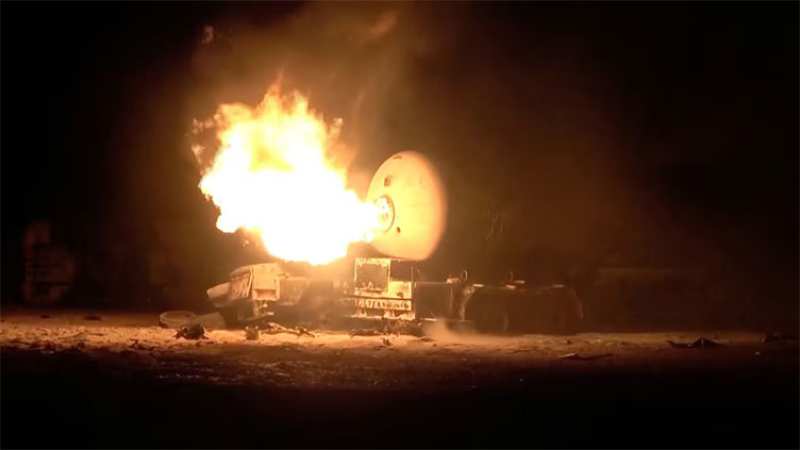- CA Yunus pays homage to Liberation War martyrs on Victory Day |
- Bangladesh capital market extends losing streak for second day |
- Bangladesh celebrates Victory Day Tuesday |
- 'Different govts presented history based on their own ideologies': JU VC |
80 Killed in US Strike on Yemen Fuel Port

At least 80 people were killed in US air strikes on a fuel terminal in Yemen, marking the deadliest assault in Washington’s ongoing 15-month campaign against the Iran-aligned Huthi rebels.
The attack on Ras Issa, carried out on Thursday, aimed to sever crucial fuel and financial supply lines to the group, according to the US military. Massive fires lit up the sky over the Red Sea coastline as the strikes caused widespread destruction at the site.
Authorities indicated that the death toll may increase as rescue operations continue. More than 150 others were reportedly wounded in the attack.
In a retaliatory move, the Huthis launched missiles towards Israel and two US aircraft carriers. Israel later confirmed intercepting a missile originating from Yemen.
Large crowds gathered across rebel-controlled regions in Yemen, chanting anti-American and anti-Israeli slogans in protest. In the capital Sanaa, demonstrators condemned the attack and vowed resistance.
A Huthi military spokesman warned that the ongoing US aggression would only escalate retaliatory operations, confrontations, and missile attacks.
Geopolitical Signal
The timing of the air strikes coincides with preparations for renewed US-Iran nuclear talks set to begin in Rome. Analysts view the escalation as a strategic signal to Tehran amid rising regional tensions.
The US military has conducted near-daily strikes against Huthi positions in recent weeks, primarily in response to rebel attacks on international vessels transiting the Red Sea and Gulf of Aden.
The total death toll from renewed US air strikes since March now stands at nearly 200.
The Huthis began targeting global shipping lanes and Israeli territory following the outbreak of the Gaza conflict in October 2023. Although they observed a two-month ceasefire, operations resumed shortly thereafter.
The US military said the latest strikes were intended to disable the Huthis’ ability to generate revenue and sustain attacks across the region.
The air raid reportedly inflicted severe damage on Ras Issa’s oil infrastructure, potentially disrupting navigation and fuel distribution.
The bombing campaign, which began in January 2024, has intensified significantly under President Donald Trump’s administration. A previous strike on March 15 killed 53 people.
Survivors described scenes of chaos and destruction as a series of explosions engulfed the terminal in flames. Many workers at the port fled as the facility was consumed by fire and smoke.
Wider Escalation
Israel has also launched previous strikes on targets in Yemen, including Ras Issa, describing them as military facilities.
The latest US attack drew sharp condemnation from Iran, which labelled it “barbaric,” while Palestinian groups described it as “aggression.”
Huthi threats to resume assaults on international shipping followed frustrations over Israel’s continued blockade of humanitarian aid to Gaza.
Analysts say the nature of the latest attacks shows a strategic shift in targeting not only military sites but also the Huthis’ economic infrastructure.
The disruption of Red Sea shipping — a route that handles approximately 12% of global trade — has forced vessels to divert around the Cape of Good Hope, significantly increasing transit times and costs.
Meanwhile, the US State Department accused a Chinese satellite company of providing imagery that allegedly supported Huthi operations, further heightening global tensions surrounding the conflict.

